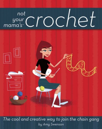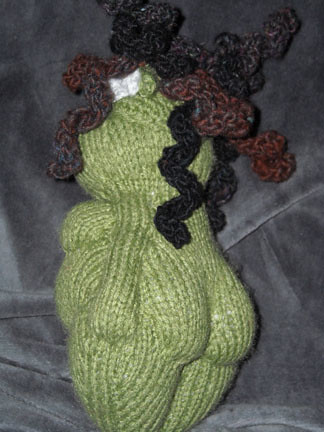What do you get when you cross a structural engineer with a crochet enthusiast? You get Robyn Chachula, a 30-year-old Cincinnati resident and Penn State graduate who uses her engineering skills during the day to help renovate and preserve historic buildings and in the evening to design crochet patterns.

She'll be here this weekend at the Pittsburgh Knit & Crochet Festival at the Four Points Sheraton North in Marshall.
Ms. Chachula will be teaching two classes. On Saturday, "Crochet Like a Pro" will give tips on how to make your projects look finished and professional, and on Sunday, "Cozy Feet From the Toe Up: Crochet," a crochet sock class.
While most people learn crochet at the knee of a relative, Ms. Chachula came to the art in a roundabout way. Her mother crocheted when she was small, but she didn't teach her daughter. About six years ago, Ms. Chachula taught herself from a book while sitting with her sister, who was bedridden due to a difficult pregnancy.
"I had lots of time, and I had a book," she says. "I was [quickly] hooked, and hooked deep."
- Where: Four Points Sheraton North, Marshall
- When: Saturday and Sunday
- What: Robyn Chachula, knitting designer Maggie Jackson of Maggiknits and other knit and crochet experts will be on hand to lecture on an array of subjects. There also will be vendors selling needlearts supplies.
- Tickets: $15 per day
- More Information: pghknitandcrochet.com or 412-963-7030
Once she got going, she became frustrated at the lack of crochet patterns for things other than afghans. "People think [if you crochet] you have to be doing a blanket," she says. While there is nothing wrong with making afghans, she believes the craft is much more versatile.
She decided she could design her own garment and accessory patterns, and on a whim, sent in some of her work to Interweave Crochet magazine.
The patterns were accepted, and her second career was born.
"My crochet designs fall in the space between the catwalk and the Target shelves," she says on her Web site, www.crochetbyfaye.com, where many of her patterns are available. "I design for the intermediate crocheter who is ready to take the next step in their craft, but [my patterns] are not so complex they will fail."
She recently wrote a book, "Blueprint Crochet: Modern Designs for the Versatile Crocheter," which will be available during the event.
These days you'll find her traveling the country extolling the virtues of the hook and also the benefits of using symbols instead of the written word when working crochet patterns. A quick primer on reading symbols is given at the beginning of her book.
"I'm dyslexic. I'd find myself skipping a stitch [with written patterns], and I didn't see it. When a pattern is written with symbols, I could see [the missed stitch] right away.
Years ago crochet patterns were published using symbols only. Each stitch had its own distinct character, so words were not necessary to execute a pattern. Then, somewhere along the line, symbols were dropped in favor of written directions.
"A whole generation of crocheters grew up without the symbols," she says.
An advantage of learning and using symbols is that they're universal. You can make a pattern from Russia or Japan without a translator. That just might be impetus enough for many "mad hookers" to learn to read them.
While Ms. Chachula can knit, she prefers to crochet. She acknowledges crochet does not have the cachet of knitting but thinks perceptions about the craft are beginning to change.
"I know there are yarn stores who only do knitting," she says. "But that is changing. It takes more yarn to crochet than to knit."
Some yarn stores give instruction in both needlecrafts. Although she certainly doesn't want anyone to think she's biased against knitters.
"If you are doing something with yarn, then I am your friend," she says with a laugh.


























